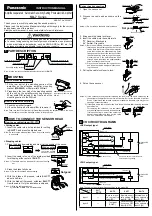
Vincent
35
Input sensitivity
Term for the smallest average (RMS) input voltage
which causes the maximum output power at the
maximum volume setting on the amplifier.
Examples: 100 mV to 500 mV (Millivolts) on high
level inputs, 2 mV to 5 mV on the phono MM input
or 0.1 mV to 0.5 mV on the phono MC input.
dB level
This is a way of describing any physical quantity;
it is a common measurement for signal voltages
and the volume. It is given in decibels (dB).
Alternating signal voltages below 1V (RMS) are
described as “line level” voltages, which are suit-
able as music signals for amplifier inputs. Inputs
on amplifiers (mostly represented by RCA sockets)
which are designed for signals on the CD player,
tape recorder, DVD player etc. are also referred to
as “line level inputs” or “high-level inputs”. Thos
signal inputs must not be confused with inputs that
accept preamplified signals.
RCA
RCA is the American name for a type of coaxial
connectors and sockets, originally the abbreviati-
on for “Radio Corporation of America”, the name
of a United States company. Both the plug and
cable consist of a rod-shaped inner lead and a
cylindrical-shaped outer lead. This enables a
mono audio signal or a video signal to be trans-
mitted. Compared to the XLR plug connector, this
type of connection is also called “unbalanced
signal connection”.
XLR
Also: “Symmetrical Connection” or “balanced”. A
plug-and-socket connection for audio devices. It is
round (with approx. 1.5 cm in diameter) and
mostly has 3 contacts/pins. XLR is an alternative
connection to RCA used to transmit NF-Signals in
professional audio equipment. The advantage is
one additional transmission path for the same but
phase inverted signal. If the receiving device can
process this, all inducted noise received in the
cable screen can be eliminated. The signal volta-
ge level used for this type of transfer is higher, so
it is a more robust less sensitive signal path.
GLOSSARY
















































